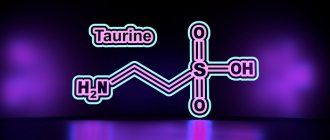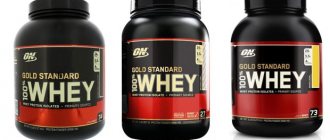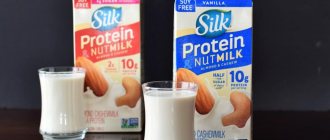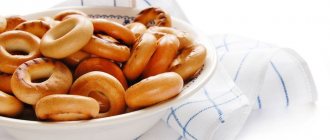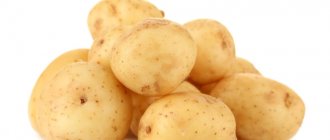What is phenylalanine?
Phenylalanine
is a type of amino acid. Amino acids are molecules that combine to form proteins. Phenylalanine is an essential amino acid for humans, meaning that the body cannot synthesize it. Instead, you need to get phenylalanine from food.
Phenylalanine is a component of several important proteins and enzymes. For example, the body can convert phenylalanine to tyrosine, which is then used to synthesize the neurotransmitters dopamine and norepinephrine.
Phenylalanine also plays an important role in the production of other important amino acids.
The effect of amino acids on the body
In addition to the formation of proteins, the substance is involved in the synthesis and formation of other important nutrients: tyrosine, dopamine, nora- and adrenaline. Preparations containing phenylalanine or its source products gently calm and improve mood. Doctors recommend taking them for the following conditions:
- depression;
- Parkinson's disease;
- confusion;
- depression;
- chronic fatigue;
- memory impairment.
Now Foods, L-Phenylalanine, 500 mg, 120 Veggie Caps
★★★★★
900 rub.
More details
Source of phenylalanine
Scientists consider phenylalanine an essential amino acid. This means that the human body is not able to produce its own phenylalanine. Instead, a person should obtain phenylalanine from food sources.
One 2022 study explains that because phenylalanine is a component of many natural proteins, high-protein foods are good sources of this essential amino acid.
Some examples of high protein foods include
animal products:
- meat
- fish
- eggs
- gelatin
products of plant origin:
- wheat
- oats
- quinoa
- barley
- rye
- lentils
- nuts and seeds
- soy products and
- vegetable algae
- sweetener aspartame
Foods and substances low in phenylalanine include:
- fruits
- vegetables
- fats
- sugar
- starches
Animal products
Meat, fish and milk contain large amounts of amino acids. This is one of the reasons why athletes eat so much chicken breast and cottage cheese. Let's take a closer look at which food of animal origin contains the maximum amount of the substance.
Meat
In order not to experience a deficiency in protein and amino acids, you need to eat meat. Below we have listed the best sources of phenylalanine that we recommend adding to your diet.
Table 2 – Amino acid content in meat
| Product | Concentration (mg) per 100 g |
| Beef | 800 |
| Turkey | |
| Chicken | 740 |
| Chick | 690 |
| Mutton | 610 |
| Pork | 580 |
To meet amino acid needs, it is better to choose lean meats. They contain easily digestible protein, which is essential for maintaining health and activity. The principle of choosing meat is simple: the less fat it contains, the more proteins and amino acids.
Fish and seafood
Phenylalanine is also present in fish. It should be eaten not only to meet the daily requirement for polyunsaturated fatty acids, but also to prevent amino acid deficiency.
Table 3 - Phenylalanine content in fish
| Product | Concentration (mg) per 100 g |
| Red caviar | 1640 |
| Pink salmon | 960 |
| Cod | 800 |
| Horse mackerel | 730 |
| Pollock | 700 |
| Sea bass | |
| Mackerel | |
| Zander | 680 |
| Pike | |
| Squid | 320 |
Red caviar, in addition to phenylalanine, contains many useful substances. In second place is pink salmon. A high concentration of the amino acid is also found in red and white varieties of fish.
Milk and dairy products
Milk contains the maximum amount of amino acids. But not all dairy products are rich in phenylalanine. Therefore, when choosing, you can be guided by the list below.
Table 4 - Phenylalanine content in milk and dairy products
| Product | Concentration (mg) per 100 g | |
| Powdered milk | 1225 | |
| Cheese | Parmesan | 1922 |
| Poshekhonsky | 1200 | |
| Cheddar | ||
| Swiss | ||
| Roquefort | 1050 | |
| Brynza | 1030 | |
| Cottage cheese | 930 | |
| Feta | 675 | |
| Yogurt | 225 | |
| Cream | 145 | |
| Whole milk | 146 | |
| Kefir | 141 | |
To avoid phenylalanine deficiency in the body, you need to eat hard cheeses, since almost all varieties of this product contain a high concentration of the amino acid. A lot of this substance is also found in milk powder.
Eggs and egg products
Eggs also contain amino acids. They are recommended to be consumed periodically, especially for breakfast.
Table 5 – Phenylalanine content in eggs and egg products
| Product | Concentration (mg) per 100 g | |
| Egg powder | 2200 | |
| Yolk | 700 | |
| Protein | 670 | |
| Egg | Chicken | 650 |
| Quail | 630 | |
Powdered eggs are used in the food industry for baking. But chicken and quail eggs can be eaten fried or boiled, added to salads, cakes and pies.
Phenylalanine - benefits
Neurological Health Benefits
The body uses phenylalanine to produce the neurotransmitter norepinephrine, which has many important functions, including:
- Helps transmit signals between the brain and nerve cells in the body
- maintaining an alert or alert state
- memory improvement
- reduction of hunger pain
Norepinephrine also has antidepressant properties. For this reason, some scientists believe that L-phenylalanine may help treat depression.
How does it work
When phenylalanine enters the body, it is absorbed through the intestines, then processed by the liver and released into the bloodstream. It then crosses the membrane between the blood and the central nervous system (blood-brain barrier) and enters the brain.
L-Phenylalanine is a precursor to another amino acid, L-Tyrosine. The latter is converted into Levodopa (L-DOPA), but it is already transformed into dopamine, adrenaline and norepinephrine. Next in order.
Dopamine, adrenaline and norepinephrine are neurotransmitters. They transmit messages between nerve cells. Messages are not in the form of text, but in the form of actions, feelings, desires, etc. The amount of neurotransmitters determines how we feel, how fast and smart we are, and in general, whether we are satisfied with our life.
So, dopamine . Its correct balance gives us a good mood, and its deficiency leads to loss of motivation and memory impairment. And not only. Dopamine deficiency is associated with one neurodegenerative disease, Parkinson's disease (PD). It is a severe deficiency of dopamine that causes tremors, muscle rigidity and depression - the main symptoms of PD.
What about adrenaline and norepinephrine ? Adrenaline gives us a sharp surge of energy and strength in stressful situations. But norepinephrine works differently. It improves alertness, memory and cognitive function.
The problem is that both adrenaline and norepinephrine are produced from dopamine. Therefore, a lack of dopamine leads to a deficiency of the other two. This is why it is important to maintain the correct balance of hormones and neurotransmitters in the body - everything is interconnected.
We have just looked at the mechanism of action of L-Phenylalanine, but what about others?
D-Phenylalanine , a synthetic version of the "L" form, works very differently. It slows down the action of two enzymes: enkephalinase and endorphinase. Both of these enzymes break down endorphins and, by slowing them down, reduce pain. Hence the analgesic effects. []
As for the latter - DL-Phenylalanine , it combines the beneficial qualities of two forms. That's why they love him. And yet, unlike the “D” form, it still produces dopamine. Well, then you know for yourself.
Phenylalanine - harm
For most people, phenylalanine consumption does not pose a health risk. However, people with phenylketonuria may have severe symptoms if they consume a diet containing phenylalanine.
Phenylketonuria (PKU) is an inherited metabolic disease that affects the body's ability to break down phenylalanine into tyrosine. As a result, phenylalanine accumulates in the blood and brain. This can cause damage to the brain and nervous system.
PKU is a relatively rare condition and affects 1 in 15,000 people.
Beneficial features
Improves working memory
Our working memory is similar to a computer's RAM. As soon as you begin any mental work, the brain allocates work space for it. Just like a computer or phone allocates memory for an application.
While you are busy with this task, the brain stores and processes all the necessary information. But if there is not enough memory, then intelligence, productivity, creativity, and even pleasure from the work performed decrease.
Where is the exit? This is where phenylalanine comes to the rescue.
The thing is that phenylalanine is a precursor to tyrosine. That, in turn, is the precursor of dopamine and norepinephrine. Scientists have found that tyrosine has a buffering effect on memory and cognitive function. This means it will be easier to retain and work with any information.
It can be concluded that phenylalanine may be useful when you are very busy at work or before an exam.
Improves attention
During danger or a stressful situation, our brain does not sleep. It sends a signal to the adrenal glands to release adrenaline and norepinephrine. Adrenaline will give you strength and speed of reaction. And norepinephrine is responsible for attention and intelligence.
In order not to become “stupid” in a critical situation, you need to stock up on all the necessary substances. In addition, constant stress depletes the reserves of adrenaline and norepinephrine in the brain. Such a deficiency leads to fatigue, irritability and mental decline.
This is why it is so important to maintain the necessary supply of the starting material, phenylalanine. []
Helps with depression
Depression is a mental illness that is first characterized by mood disturbances: sadness, depression and the inability to enjoy anything (sex, communication, travel). Next comes loss of sleep and appetite, or vice versa - drowsiness and gluttony. Mental abilities decrease, and the person begins to isolate himself from society.
There can be many reasons: problems in relationships with parents, death of a loved one, job loss, disability, alcohol or drug addiction, etc.
But what does phenylalanine have to do with it?
We have already mentioned that a lack of dopamine leads to loss of mood, and its deficiency leads to Parkinson’s disease and depression. And phenylalanine increases this neurotransmitter. This is where it came in handy.
Now on to the research. A study was conducted back in 1977. They took 20 people with depression. And they were given DL-Phenylalanine in doses of 72-200 mg/day. All this lasted 20 days. And in order for everything to be fair, three methods were used at once to document all psychopathological, neurological and other changes:
- AMP system.
- Hamilton Depression Scale.
- Von Zerssen Self-Assessment Questionnaire.
Well, to be sure of everything, the scientists invited experienced psychiatrists.
At the end of the study, 12 people could be discharged from the hospital and sent home. Everything was so good. Four experienced either mild or moderate antidepressant response. Which is also good - compare the prices of antidepressants and our drug. But the remaining four did not receive any effect at all. Apparently individual intolerance, but this is not certain.
In another 1979 study, researchers compared DL-Phenylalanine and Imipramine. Imipramine is one of the earliest and most powerful antidepressants. They took 40 people with depression. Divided into two equal groups of 20 and gave them either DL-Phenylalanine (150-200 mg/day) or Imipramine (150-200 mg/day).
What's the result? 27 patients (14-Imipramine, 13-Phenylalanine) completed the 30-day study. There were no statistical differences between the two groups. While imipramine was better at treating anxiety and sleep problems at the beginning and middle of the study, by the end of the study the differences were insignificant. It can be concluded that phenylalanine is effective as an antidepressant drug.
Other useful properties
- Helps treat vitiligo.
- Relieves alcohol withdrawal symptoms.
- Improves symptoms of ADHD.
Symptoms of PKU
- lighter skin, hair, and eyes than siblings who do not have PKU
- eczema
- musty urine or skin odor
- frequent vomiting
- body spasms or tremors
- convulsions
- hyperactivity
- behavioral difficulties such as frequent angry outbursts and episodes of self-harm
PKU symptoms often begin early in life. Children with this condition should avoid eating foods that contain high levels of phenylalanine. However, as an earlier 2011 study notes, scientists currently disagree on whether such dietary restrictions are necessary for adults.
Phenylalanine - side effects
Side effects of phenylalanine consumption are found only in people with PKU. In people with PKU, phenylalanine may cause side effects related to cognition and mood.
A 2011 study examined the effects of phenylalanine intake in adults with PKU. In this double-blind, placebo-controlled study, one group of adults with PKU took a phenylalanine supplement for 4 weeks, while a separate group of adults with PKU took a placebo for the same period of time.
At the end of the study, those in the placebo group reported better moods and scored higher on tests of sustained attention than those who received the phenylalanine supplement.
Overdose
If the dose is exceeded, the following phenomena are possible:
- allergic reactions;
- restlessness or increased nervousness;
- nausea;
- dizziness;
- headache;
- heartburn;
- feeling of weakness.
If side effects occur, you should stop using the dietary supplement. Questions about resuming the course should be asked to your doctor.
Phenylalanine - daily requirement
An earlier review from 2007 suggests that the minimum daily intake of phenylalanine is about 9.1 milligrams per kilogram (mg/kg) of body weight. According to the review, the maximum daily dose of phenylalanine is 38-48 mg/kg body weight.
People with PKU need to consume much less phenylalanine than people who do not have the condition. They should also consult a doctor or nutritionist for further advice regarding phenylalanine intake.
Fruits
100g of product contains:
Fruits
| RNE | LEU | TUR | MET | Calorie content | Protein | Carbohydrates | Fats | ||
| mg | mg | mg | mg | Kj | Kcal | gr | gr | gr | |
| Apricots | 33 | 50 | 19 | 4 | 177 | 42 | 0.9 | 9 | 0,1 |
| Apricots, dried | 195 | 295 | 112 | 24 | 1044 | 249 | 5.3 | 50 | 1 |
| Avocado | 111 | 197 | 73 | 43 | 924 | 221 | 1.9 | 0,4 | 23,5 |
| A pineapple | 14 | 22 | 14 | 13 | 246 | 59 | 0.5 | 13 | 0,2 |
| Orange | 20 | 32 | 13 | 8 | 179 | 42 | 1 | 8,3 | 0,2 |
| Watermelon | 14 | 17 | 11 | Є | 160 | 38 | 0.6 | 8,3 | 0,2 |
| Banana | 34 | 85 | 21 | 9 | 369 | 88 | 1.1 | 20 | 0,2 |
| Bananas, dried | 145 | 194 | 92 | 67 | 1178 | 281 | 3.5 | 61 | 0,6 |
| Cowberry | 18 | 28 | 23 | 6 | 162 | 39 | 0.3 | 7 | 0,5 |
| Canned lingonberries, compote | 15 | 18 | 18 | 5 | 320 | 76 | 0.2 | 17 | 0 |
| Elder | 153 | 221 | 193 | 53 | 199 | 48 | 2.5 | 7 | 0 |
| Grapes, white and black | 15 | 15 | 13 | 23 | 297 | 71 | 0.7 | 16 | 0,3 |
| Cherry | 16 | 23 | 10 | 4 | 241 | 58 | 0.9 | 11 | 0,5 |
| Pomegranate | 18 | 35 | 14 | 7 | 326 | 78 | 0.7 | 17 | 0,6 |
| Grapefruit | 10 | 15 | 7 | 3 | 158 | 38 | 0.6 | 7,4 | 0,2 |
| Pear | 13 | 26 | 4 | 7 | 219 | 52 | 0.5 | 12,4 | 0,3 |
| Guava | 2 | 60 | 11 | 5 | 158 | 38 | 0.9 | 7 | 0,5 |
| Melon | 22 | 44 | 18 | 9 | 110 | 26 | 0.9 | 5,3 | 0,1 |
| Blackberry | 36 | 54 | 24 | 18 | 125 | Z0 | 1.2 | 3 | 1 |
| Raisin | 47 | 75 | 10 | 13 | 1161 | 277 | 2.5 | 63,9 | 0,6 |
| Figs | 31 | 57 | 56 | 10 | 264 | 63 | 1.3 | 12,9 | 0,5 |
| Figs - dried | 120 | 140 | 220 | 40 | 1045 | 250 | 3.5 | 55,1 | 1.3 |
| Kiwi | 25 | 50 | 20 | 10 | 255 | 61 | 1 | 11 | 0,6 |
| Kishmish | 47 | 74 | 10 | 12 | 1247 | 298 | 2.5 | 66,2 | 0,6 |
| Clementine (similar to tangerine) | 21 | 17 | 10 | 10 | 192 | 46 | 0.7 | 9 | 0,3 |
| Strawberry | 25 | 44 | 29 | 1 | 134 | 32 | 0.8 | 5,5 | 0,4 |
| Lime | 18 | 13 | 10 | 7 | 195 | 47 | 0,5 | 1.9 | 2,4 |
| Lemon | 25 | 18 | 14 | 10 | 149 | 35 | 0.7 | 3,2 | oh |
| Lychee | 23 | 45 | 18 | 9 | 319 | 76 | 0.9 | 16,8 | 0,3 |
| Raspberries | 39 | 59 | 26 | 20 | 142 | 34 | 1.3 | 4,8 | 0,3 |
| Mango | 20 | 37 | 12 | 6 | 252 | 60 | 0.6 | 13 | 0,5 |
| Mandarin | 25 | 18 | 14 | 11 | 192 | 46 | 0.7 | 10,1 | 0,3 |
| Mirabella (small yellow plum, cherry plum) | 15 | 19 | 6 | 6 | 269 | 64 | 0.7 | 14 | 0,2 |
| Nectarine | 22 | 33 | 23 | 35 | 238 | 57 | 0.9 | 12 | 0,1 |
| Papaya | 8 | 14 | 4 | 2 | 54 | 13 | 0,5 | 2,3 | 0,1 |
| Peach | 18 | 28 | 20 | Z0 | 173 | 41 | 0.8 | 8,9 | 0,1 |
| Peach, dried | 116 | 183 | 128 | 189 | 1035 | 247 | 4.9 | 54 | 1 |
| Rhubarb | 17 | 24 | 11 | 7 | 55 | 13 | 0.6 | 1,4 | 0,1 |
| Plum | 13 | 16 | 5 | 5 | 197 | 47 | 0.6 | 10,2 | 0,2 |
| Dried plum | 72 | 89 | 28 | 28 | 1092 | 261 | 3.3 | 56,5 | 1,1 |
| Currant, white | 27 | 41 | 18 | 14 | 213 | 51 | 0.9 | 9 | 0 |
| Red currants | 33 | 50 | 22 | 17 | 181 | 43 | 1.1 | 7 | 0,2 |
| Currant, black | 39 | 59 | 26 | 20 | 239 | 57 | 1.3 | 10 | 0,2 |
| Fresh dates | 56 | 90 | 30 | 22 | 1174 | 280 | 2 | 65 | 0 |
| Dates, dried | 57 | 92 | 31 | 22 | 1194 | 285 | 2 | 66 | 0 |
| Persimmon | 29 | 46 | 18 | 6 | 297 | 71 | 0.6 | 16 | 0,3 |
| Cherries | 16 | 23 | 10 | 4 | 261 | 62 | 0.9 | 13,3 | 0,3 |
| Blueberry | 22 | 36 | 7 | 10 | 176 | 42 | 0.6 | 7 | 0,6 |
| Apples - dried | 39 | 71 | 20 | 13 | 1067 | 255 | 1.4 | 57 | 1,6 |
| Apple | 9 | 16 | 5 | 3 | 225 | 54 | 0.3 | 11.4 | 0.6 |
| The source of information is the German manual “Nahrwerttabelle fur die Ernahrung bei angeborenen Storungen des Aminosaurenstoffwechsels”. |
